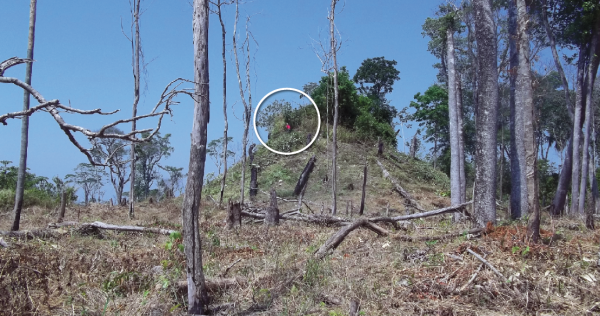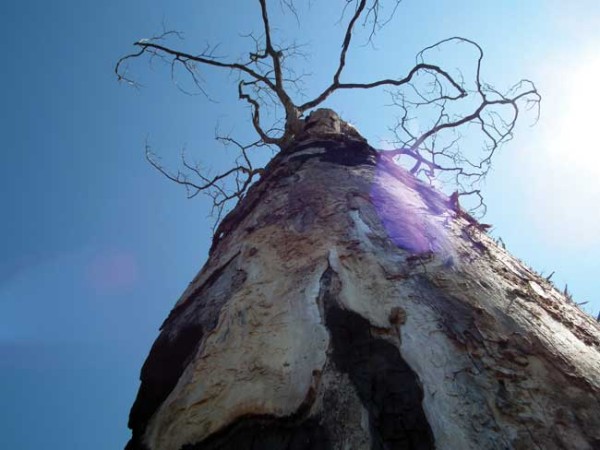Stemming the Tide

The effects of deforestation, and a person (in red) chopping down a tree at the archaeological site Las Guacamayas (WCS Guatemala)
New environmental project aims to reduce the effects of climate change in Guatemala
A $25 million environmental project has been launched in Guatemala aimed at reducing the effects of climate change. The program, Clima, Naturaleza y Comunidades en Guatemala (CNCG), will operate in four regions of the country with the objective of conserving natural resources and supporting efforts to reduce the impact of extreme global weather changes.
According to the Global Climate Risk Index, Guatemala is one of the top 10 countries most affected by climate change due to its geographical location, which leaves it susceptible to natural disasters.
“Guatemala generates one of the lowest carbon emissions per capita, but is one of the most vulnerable countries in the world,” said Patricia Orantes, director of CNCG. “At the same time, Guatemala is one of the countries with the most biodiversity […] but this natural richness is under grave threat: The sheer rate of deforestation went from 93,000 hectares per year in 2001 to more than 132,000 in 2010.”
CNCG will be led by the international conservation group Rainforest Alliance together with various environmental, business and academic institutions. By focusing on various areas such as deforestation, reducing carbon emissions and strengthening Guatemala’s adaptability to climate change, it is hoped that CNCG will succeed in conserving the country’s natural resources.
One of its most innovative strategies includes working with rural and community-based businesses, which produce forest products, to help them find more markets to sell their sustainable goods to.
The four regions in which the project will operate—la Reserva de la Biósfera Maya, la Reserva de Biósfera Sierra de las Minas, las Verapaces y el Altiplano Occidental—were chosen because of their vulnerability to climate change and the high percentage of local residents who depend on the natural resources around them to survive.
“This project will improve the conservation and sustainable management of the forests. This is the fundamental part, because it will help us care for and maintain the forests from which we live. It will benefit not only us but also the future generations,” said Luis Góngora from Impulsores Suchitecos, a community-based forestry company in Petén.
CNCG hopes that it will not only help protect Guatemala’s forests and biodiversity, but will also generate employment in rural communities.

Patricia Orantes,Directora CNCG,Guatemala.Quiero presentarle para su consideración algunos proyectos de orden ambiental,que al ser aplicados ayudarán a reducir la contaminación y por tanto,elcalentamiento global. Ver pág.web: http://www.wix,com/corpgutierrezcastill/corp#! Yo quisiera que Ud me dé un email para poder ser más explicíto en mi información.Yo quiero
ayudales a reducir la amenaza en que se encuentran más 30 países ribereños.Por tanto,en espera de su pronta y grata respuesta,le reitero mis saludos.Sinceramente,O.Gutiérrez.C Tlf.0414.5091331Barquisimeto,Estado Lara,República Bolivariana de Venezuela